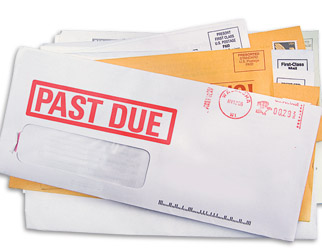
What Is An Involuntary Bankruptcy Case?
Most bankruptcy cases are filed by debtors who want to receive a discharge from the court. However, there are also cases known as “involuntary bankruptcies” in which the creditors bring a debtor to court to force him or her to file bankruptcy and liquidate assets. A bankruptcy attorney like those at the Oswalt Law Group in Phoenix can often help an individual who is facing an involuntary bankruptcy to explore options and alternatives to having his or her possessions seized and sold.
Why Would A Creditor Petition for an Involuntary Bankruptcy?
At first glance, it may not seem logical that a creditor would petition the court to force a debtor to file bankruptcy. After all, bankruptcy often wipes out the debt owed to the creditor, particularly if it is unsecured. However, there are cases in which it is in the creditor’s best interests to have an individual file for bankruptcy. There are several things that must be considered when petitioning for an involuntary bankruptcy, however, including:
- Creditors agree that bankruptcy is the best option. When a debtor owes at least 12 different creditors, three must agree to file an involuntary bankruptcy. If the debtor has less than 12 creditors, only one is needed to start the case.
- Only Chapter 7 or 11 cases are eligible. Involuntary bankruptcy must proceed under Chapter 7 or Chapter 11 of the bankruptcy code; creditors cannot petition for a Chapter 13 bankruptcy.
- The debtor must be eligible. While almost anyone can be the subject of an involuntary bankruptcy, these cases usually involve businesses. However, farmers, banks, non-profit organizations, insurance companies, and credit unions are not eligible targets for an involuntary bankruptcy petition. Railroads cannot be the subject of an involuntary Chapter 7 petition and stock brokers cannot be the subject of a Chapter 11 petition.
- Debt threshold and type must meet standards. The debtor must owe at least $14,425 in unsecured debt to meet the threshold for an involuntary bankruptcy. Additionally, the debt must be undisputed rather than contingent or the result of an ongoing lawsuit.
Can I Challenge an Involuntary Bankruptcy?
Debtors have 20 days from the filing of an involuntary bankruptcy petition to contest the proceedings and show cause why the bankruptcy should not proceed. Creditors run a risk when filing an involuntary bankruptcy that the debtor’s assets will not be enough to pay off the debt; therefore, showing that the debtor’s assets are insufficient to meet their obligations may be enough to forestall an involuntary petition. If you have questions about bankruptcy, contact the attorneys at the Oswalt Law Group in Phoenix today.
